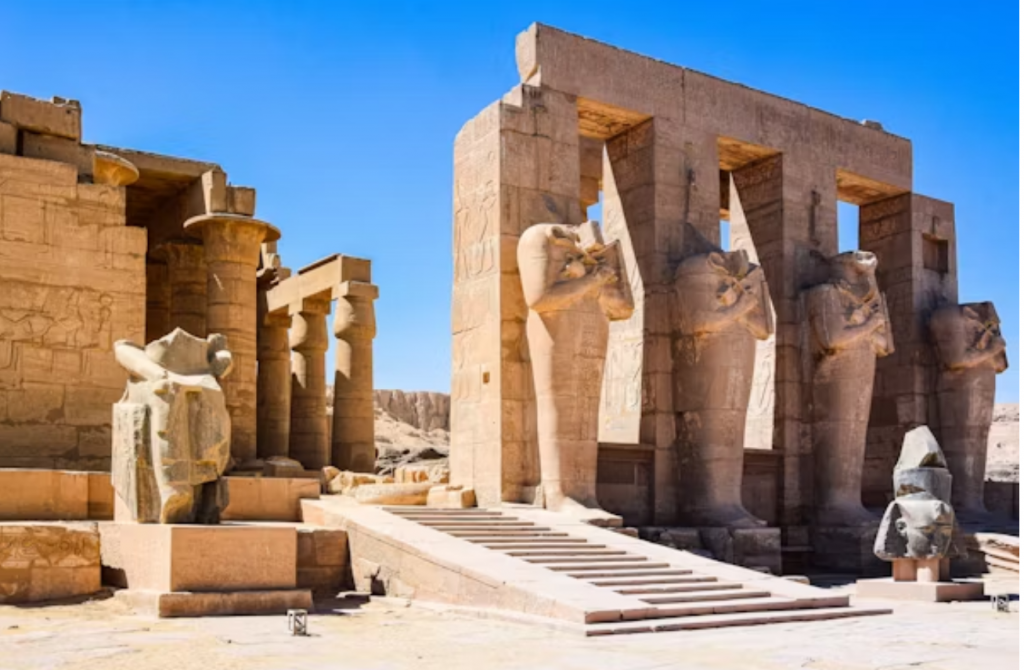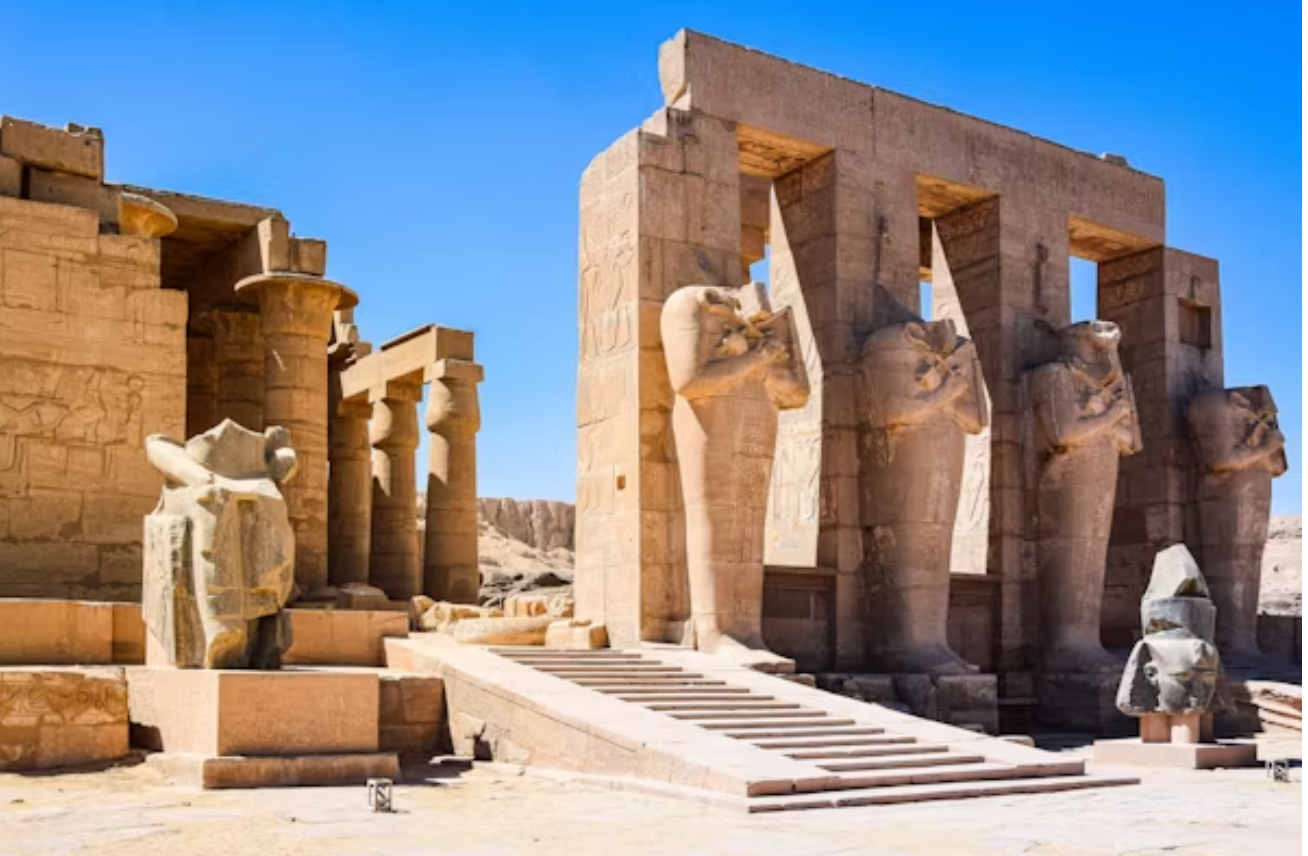Introduction: Egypt’s Rich Historical Legacy
Egypt, a land of mystique and timeless beauty, offers a treasure trove of cultural wonders waiting to be explored. From the monumental pyramids of Giza to the intricate temples of Karnak, Egypt’s ancient civilization continues to captivate the imagination of travelers and historians alike. With a history spanning over 5,000 years, Egypt is home to some of the most awe-inspiring and significant historical sites in the world.

Why should Egypt be on your travel list? Simply put, it’s a living museum. Whether you’re a history buff, an architecture enthusiast, or someone seeking a deeper connection with ancient cultures, Egypt offers something extraordinary for everyone. Let’s embark on a journey to discover the must-see historical sites that truly encapsulate Egypt’s cultural wonders.
The Pyramids of Giza: The Eternal Symbol of Ancient Egypt
The Pyramids of Giza, standing proudly on the outskirts of Cairo, are the quintessential symbol of ancient Egypt. They have survived millennia and remain one of the Seven Wonders of the Ancient World. The Great Pyramid of Khufu, the largest of the three, continues to leave visitors awestruck by its sheer size and architectural ingenuity. Constructed around 4,500 years ago, it was originally covered in smooth limestone casing, which reflected the sun’s rays, making it shine like a beacon.
But the Great Pyramid is just the beginning. The Sphinx, with the body of a lion and the face of a pharaoh, guards the pyramids, offering a sense of mystery and grandeur. The Sphinx has long been the subject of debate, with scholars and archeologists fascinated by its origins and purpose. It’s no wonder that the Pyramids of Giza are a must-visit destination for anyone interested in Egypt’s ancient culture and mysteries.
The Temples of Karnak: The Magnificent Ancient Complex
Moving from the pyramids to Luxor, the Karnak Temple Complex is another site that should be at the top of your list. This sprawling temple complex is the largest religious site ever constructed, dedicated to the Theban Triad: Amun, Mut, and Khonsu. The grandeur of Karnak is apparent from the moment you step inside. The temple’s Great Hypostyle Hall, with its 134 massive columns, is one of the most awe-inspiring architectural feats in Egypt.
Visitors will find themselves marveling at the hieroglyphics that adorn the columns, each telling stories of gods, pharaohs, and religious rituals. The sheer scale and detail of the site are mesmerizing, offering an immersive experience into the spiritual heart of ancient Egypt.
The Valley of the Kings: The Burial Grounds of Pharaohs
If you’re fascinated by Egypt’s royal history, the Valley of the Kings is an essential stop. Located on the west bank of the Nile near Luxor, this valley served as the burial site for many of Egypt’s most famous pharaohs, including Tutankhamun. The tombs, carved deep into the rock, are decorated with vivid murals that depict the pharaohs’ journey to the afterlife.
The discovery of Tutankhamun’s tomb in 1922 by British archaeologist Howard Carter is one of the most significant archaeological finds in history. Visitors can explore the tombs of several pharaohs, including Ramses II and Seti I, and see the incredible preservation of ancient artifacts, offering a glimpse into the opulence and mysticism of Egypt’s royal past.
Abu Simbel: The Majestic Twin Temples
Abu Simbel, located in the southern part of Egypt near the border with Sudan, is one of the most stunning examples of ancient Egyptian architecture. Built by Ramses II, these two temples were carved into the mountainside to honor the pharaoh and the gods. The grandeur of the site is overwhelming, with colossal statues of Ramses II sitting proudly at the entrance.
The relocation of Abu Simbel in the 1960s, due to the construction of the Aswan High Dam, is a testament to modern engineering and the global effort to preserve Egypt’s cultural heritage. The temples now stand as a symbol of Egypt’s rich history and the determination to protect its legacy.
The Egyptian Museum in Cairo: The Heart of Ancient Artifacts
No visit to Egypt would be complete without a stop at the Egyptian Museum in Cairo. This museum is home to a vast collection of ancient Egyptian artifacts, including the treasures of Tutankhamun, the famous golden mask, and countless other relics that showcase the art, culture, and history of ancient Egypt. The museum’s collection is so extensive that it can take hours, if not days, to explore fully.
The Temple of Luxor: A Testament to Ancient Religious Architecture
The Temple of Luxor, another marvel on the banks of the Nile, is a symbol of Egypt’s religious power. Originally built by Amenhotep III and later expanded by Ramses II, the temple served as a major center for the worship of the god Amun. The majestic entrance, flanked by towering obelisks and statues, gives visitors a sense of the grandeur that once existed in ancient Luxor.
The grand avenue of sphinxes that stretches between Luxor and Karnak Temple adds to the awe-inspiring sight. The Temple of Luxor is a living testament to the architectural prowess and religious devotion of the ancient Egyptians.
The Step Pyramid of Djoser: The First Pyramid in History
The Step Pyramid of Djoser, located in the Saqqara necropolis, is the oldest stone building in Egypt and marks the beginning of the pyramid-building era. Designed by the architect Imhotep, the Step Pyramid is a precursor to the later smooth-sided pyramids of Giza. It is considered one of the first monumental stone structures in the world.
Exploring the Djoser complex provides visitors with insight into the evolution of Egyptian architecture and the advancements that led to the iconic pyramids that followed.
The Citadel of Saladin: A Fortress with a Rich History
The Citadel of Saladin in Cairo is a monumental fortress with a rich history dating back to the 12th century. Once the seat of the ruling powers of Egypt, the citadel offers panoramic views of the city and houses several important mosques, including the Mosque of Muhammad Ali. The architectural beauty and historical significance of the citadel make it a must-see for anyone interested in Islamic Egypt.
The Red Sea Coast: Egypt’s Cultural and Natural Beauty
Beyond Egypt’s archaeological wonders, the Red Sea Coast offers a blend of natural beauty and historical significance. The ancient port city of Alexandria, once home to the famous Lighthouse of Alexandria, is an essential stop for those interested in Egypt’s Hellenistic history. The coastal region was also a hub for trade, linking Egypt with other ancient civilizations.
Conclusion: Egypt’s Eternal Appeal as a Cultural Destination
Egypt’s historical sites are more than just remnants of a bygone era; they are living monuments to a
4o

No responses yet